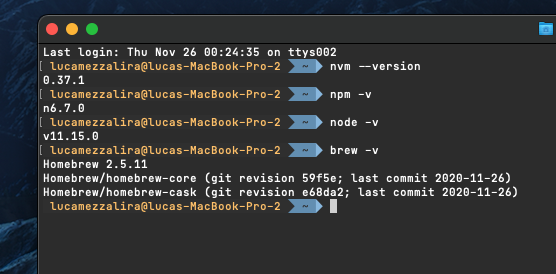An essential developer application on the Mac is Homebrew, the 'missing package manager for macOS.' Although you cannot install Homebrew today to manage ARM-compiled packages, you can install One of the reasons I took the plunge and bought an M1-based Mac is to test out its performance and suitability as a developer. Homebrew isn't the kind of software that most Mac users would have, but it is a key management system. But the improvements don't seem to be enough to counter Apple's M1-based MacBook Air. Now Homebrew is officially available for ARM64 Mac M1 computers, you can easily install on your Mac, and with the help of Homebrew you can build the packages from source code into ARM64 executable.
If you’re one of the early adopters who got the new M1 Apple Silicon Mac just to find that Homebrew and many other native terminal apps don’t yet have support for the new ARM architecture, you’ll. Ever since I read Kay Singh’s Apple Silicon M1: Black. Fuckery article, I couldn’t stop wanting one. My 2012 MacBook Air was in need of a replacement, and although still very serviceable for a 8+year old laptop, not upgrading OSX and a shortened battery lifespan were getting irritating. All in one chat messenger for mac. So, Santa (well, you know) bought me a M1 2020 MacBook Air. At first, I wanted to hold off for a.


Every developer knows about the Homebrew package manager that makes it really easy to install, update applications, and utilities on a Mac. The installation of homebrew remains the same for the new macOS version BigSur, but we will explain how to it anyway in this article.
Note for ARM processors users
If your Mac uses the Apple Silicon (M1 Chip), you will have a problem with the installation till the date of publication of this article. You can read in this another article how to solve the issue of Homebrew that doesn't run on the M1 chip.

Homebrew M1 Support
If your processor has an Intel-based processor, then you can follow the tutorial without any inconvenience (which is short anyway).
Homebrew Arm M1
Installing Homebrew
Start by opening the Terminal and start the homebrew setup by simply downloading the installation script of homebrew with curl and then running it with bash. You can easily do this with a single command like this:
The installation script does a variety of stuff as setting the installation directory and so on. After running the command, the terminal will probably prompt for your password if it's required. Then, the installation will take a while and once it finishes, you can easily verify if it works running the following instruction:
Macbook M1 Install Homebrew
The command should generate the following output:
Happy coding ❤️!
